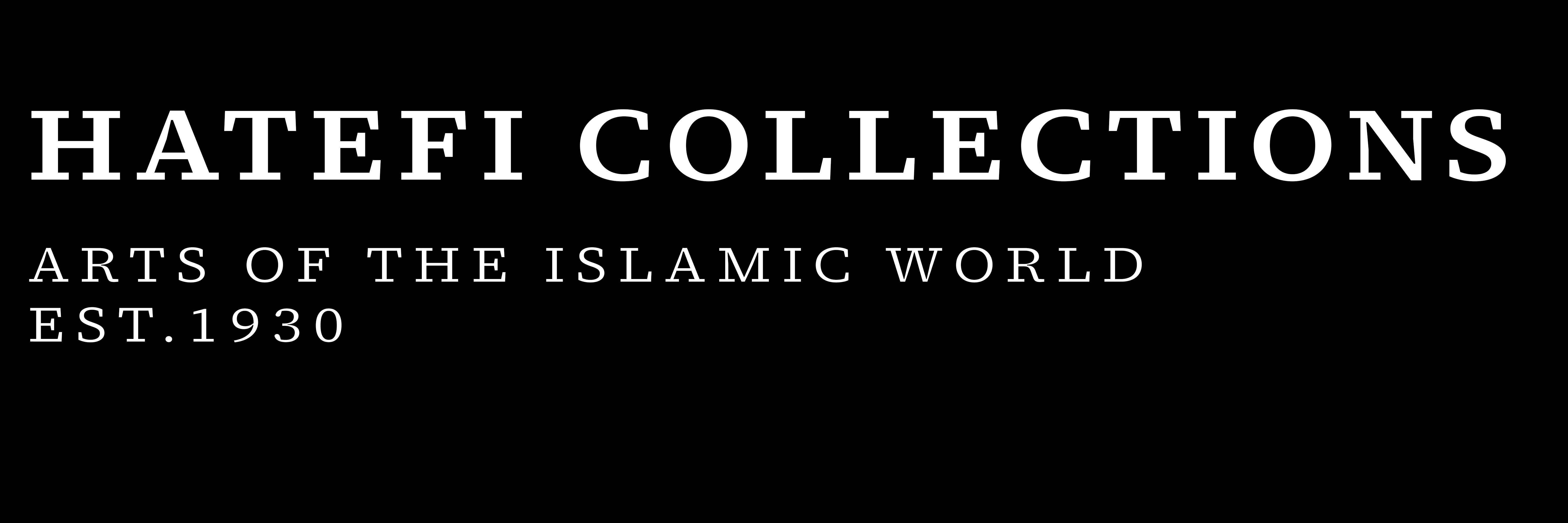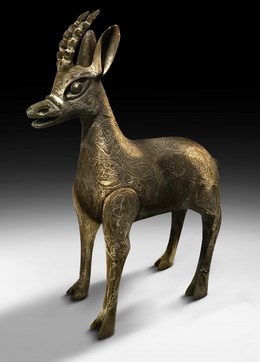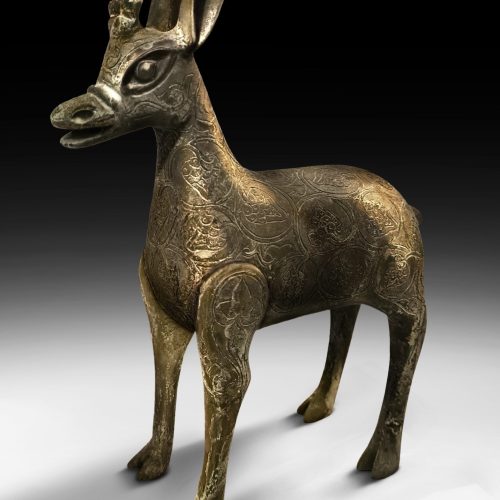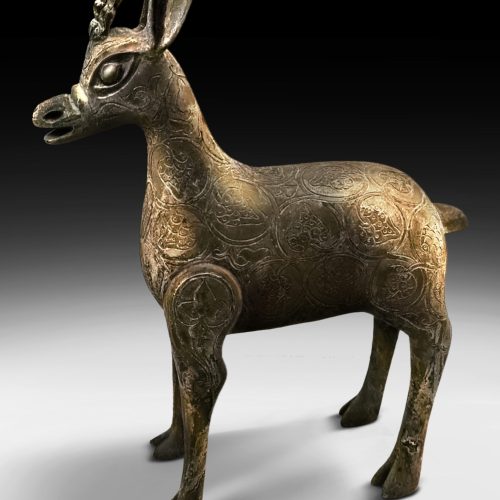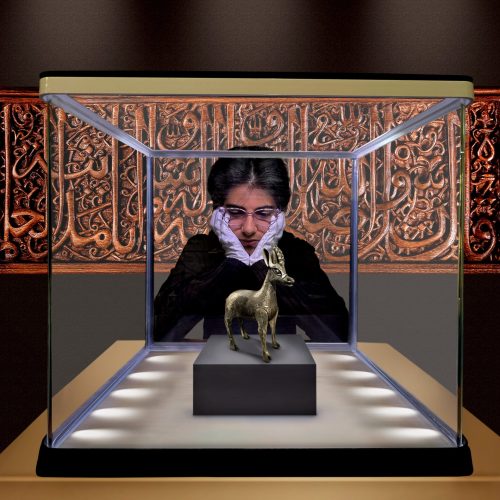Footnote: | Standing on delicate legs, with alert expression, this is a very clearly carefully observed animal, both in its stance and in its physical attributes. The horns are very specific, both in their curvature and in the horizontal banding. The ears are very large and the bands over the eyes are also pronounced. All these are features that can be found in various species of gazelle and antelope, for example, the impala. Almost all the possible subjects are animals that are found in Africa, strongly supporting an Egyptian provenance. The attribution is further encouraged by the presence of gazelles or antelopes on Fatimid lustre pottery. A particularly clear example is found on a dish in the Islamic Art Museum in Cairo, which has an oval inverted drop-shaped panel on the forequarter, similar horns and pronounced ears, an open mouth, and a similar bridge across the nose (Schätze der Kalifen, exhibition catalogue, Vienna, 1998, no.141, pp.182-185).Various features of this gazelle stand out in terms of the form. The cloven hooves are very unusual to find in an Islamic bronze, the forequarters with the raised inverted drop panels are also very clear, as are the nostrils and the bridge across the nose. All these features are found in an aquamanile in the form of a deer that is in the Museo di Capodimonte, Naples (Francesco Gabrieli and Umberto Scerrato, Gli arabi in Italia, Milan, 1979, no.383, p.348). The Naples deer is attributed to 11th-century Fatimid Egypt.Unlike our gazelle, the Naples deer however does not have any surface decoration. Very comparable decoration can however be found on a bronze hare in the Museum of Islamic Art in Berlin (Schätze der Kalifen, op.cit., no.71, p.114). Each has a body covered with tendrils which scroll around to form circles, each containing a vegetal design. In the case of the Berlin hare, it is a trefoil leaf, while here it appears to be a pomegranate. In each case, there is stippling to be found on the vegetal panel. Further features are also held in common between the animals thus discussed, and the much battered but still hugely impressive deer signed by the master Gassan, 46cm. high, in the Völkerkunde Museum in Munich (Schätze der Kalifen, op.cit., no.67, pp.112-3). The cloven hooves, the inverted drop-shaped panel on the forequarter (doubled, as in the Naples example), the nostrils, the bridge on the nose, and the engraved scrolling designs are all encountered here. There is little doubt that all were produced in the same environment and at about the same time.The Naples deer is fitted with an aperture with which to fill it on its neck. While the cup crowning the aperture appears to be later, the opening is certainly original. It indicates that that animal at least was intended as an aquamanile. Both our gazelle and the Munich deer have openings under the belly. |
|---|

